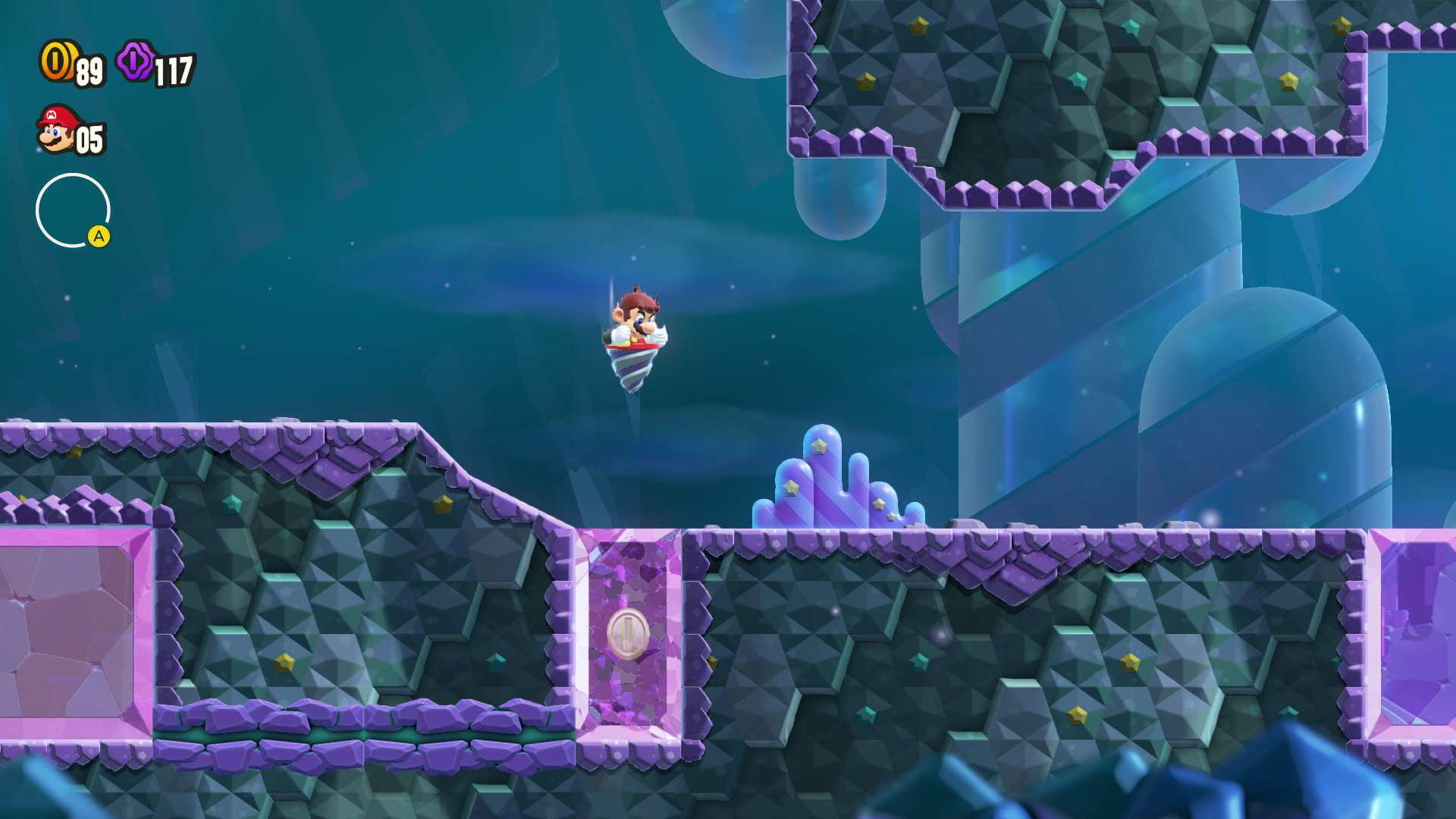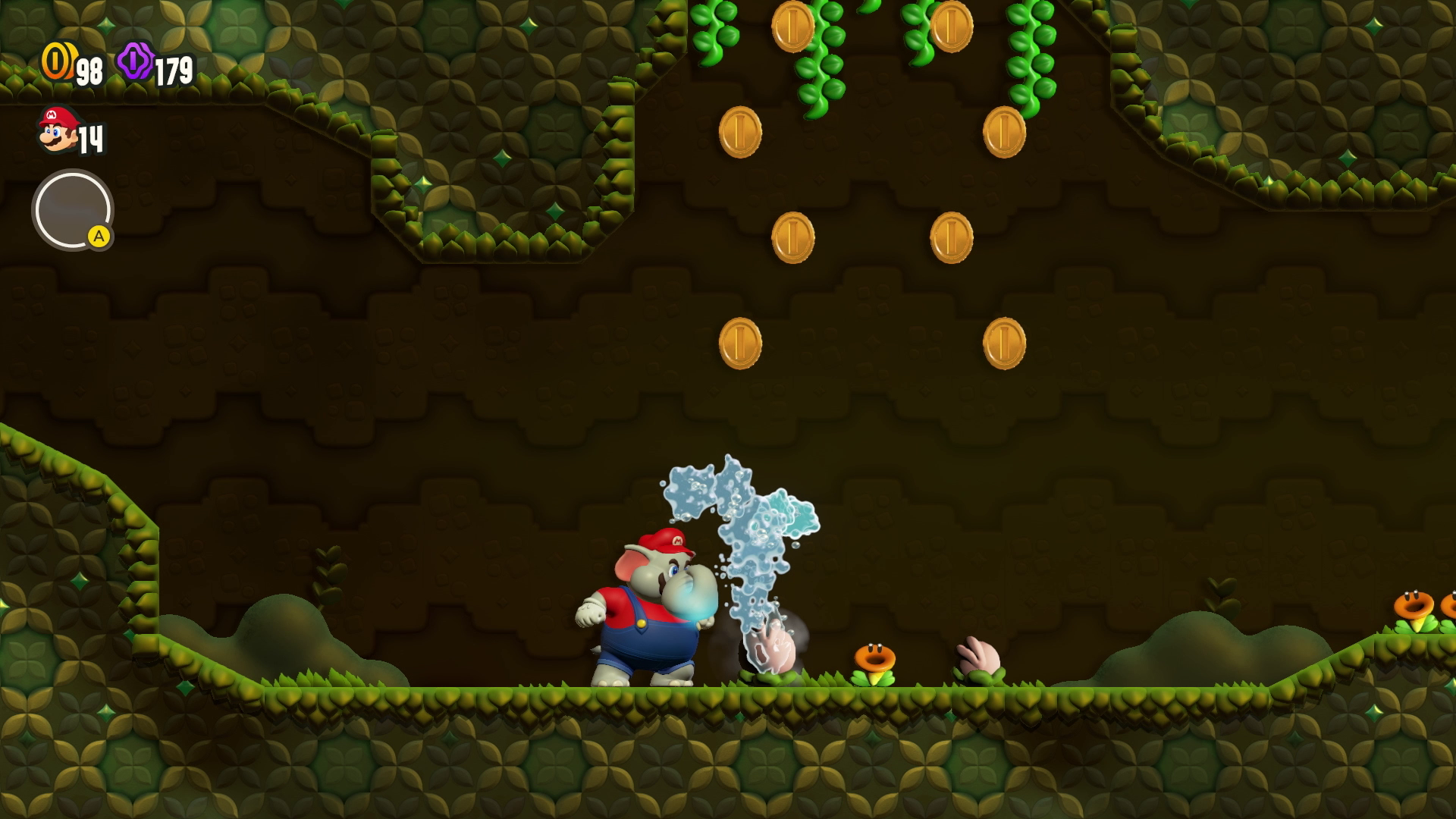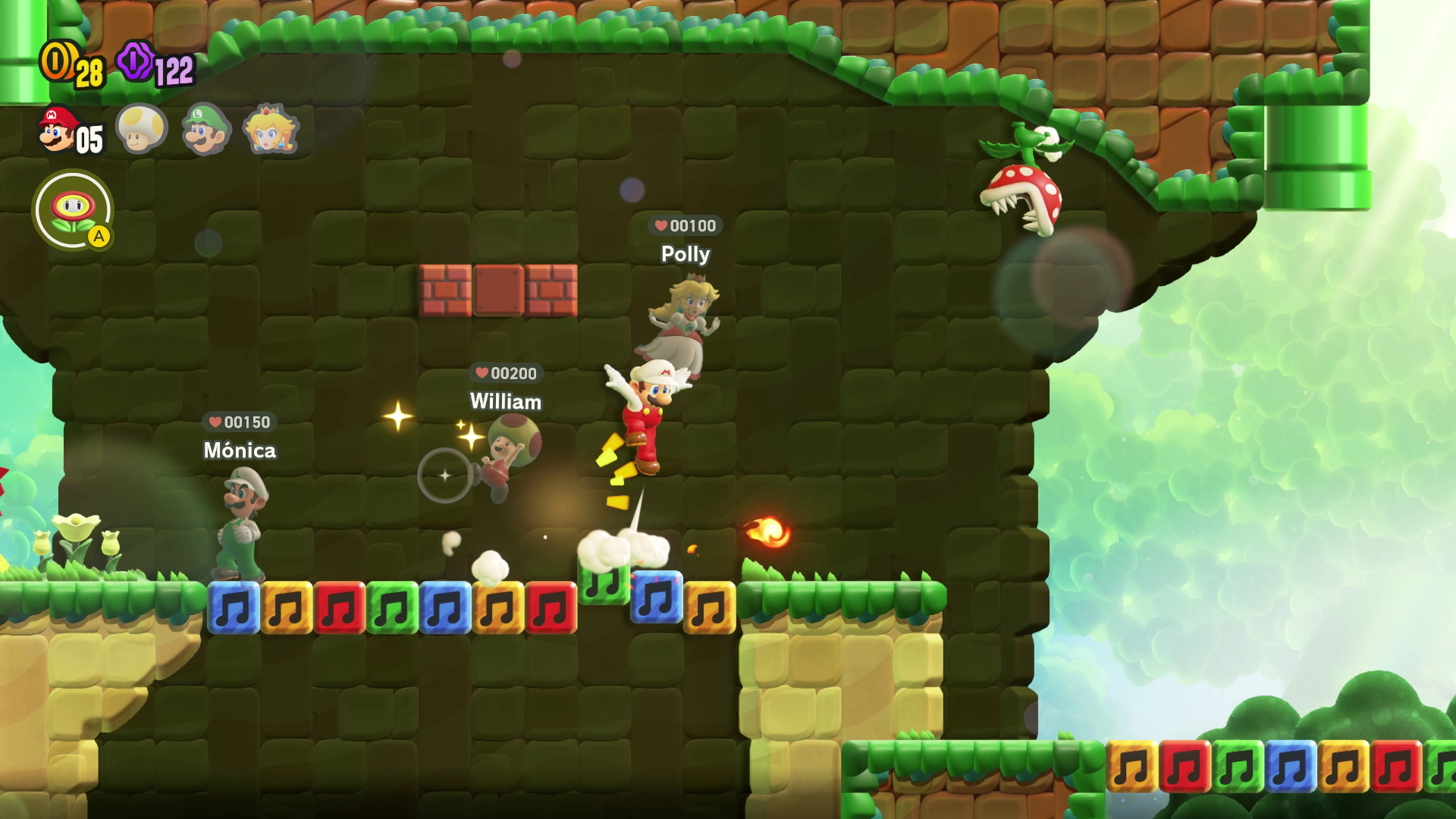
One of the biggest surprises of the latest Nintendo Direct in June was Super Mario Bros. Wonder.
While we’ve gotten offshoots like Super Mario Run, Super Mario Maker, and The New Super Mario Bros. U Deluxe, Wonder is the first traditional, fully brand-new 2D Mario game in 10 years. As such, there’s quite a lot of excitement surrounding it, especially amid the new Wonder Flowers that dramatically shake up levels with peculiar effects.
To learn more about the next 2D Mario, MobileSyrup had the privilege of sitting down with two veteran Nintendo developers: producer Takashi Tezuka, original Super Mario Bros. co-designer and Super Mario World director, and director Shiro Mouri, longtime Nintendo programmer and New Super Mario Bros. U Deluxe director.
Together, they talked about the origins of Super Mario Bros. Wonder, the design philosophy behind the Wonder Flowers and new power-ups, the evolution of the 2D Mario as a whole, and more.
Question: Super Mario Bros. Wonder is the first new 2D Mario in 10 years. As such, what were the goals you established when setting out on this project?

New Super Mario Bros. U Deluxe on the Switch is an enhanced port of 2012’s Super Mario Bros. U, the last brand-new 2D Mario.
Shiro Mouri, director: In developing a brand-new 2D Mario, we had two concepts in mind. The first is to fill it with secrets and mysteries, and the second is to be able to choose freely, and we began development with these two concepts in mind.
Q: Mario has been around for over 35 years, so players have expectations accordingly. How do you balance keeping things familiar for players while also surprising them with new kinds of levels and mechanics?

Takashi Tezuka. Image credit: Nintendo
Takashi Tezuka, producer: That’s a very difficult challenge. [laughs] We have the same goals when we begin development pretty much with every title. Now, of course, over our long tenure of developing these titles, the things we put in at the beginning of the franchise were very surprising and mysterious but now have become used over and over again, [so] that newness may have worn off.
And so one of the challenges we placed on ourselves, one of the pieces of homework when we began development, was to come up with new surprises that would fill the role of things like entering a pipe to go to a new area or hitting a block to get a new item. But with that in mind, we don’t want to change the fundamental “fun” part of what is Mario. And, of course, that is having players play through a course again and again so they become more proficient with the skillset.
And players, as they’re playing through and growing their skill set, will find all sorts of new discoveries, new interesting things, as they’re playing through these courses repeatedly. And because we know they’ll be playing them again and again, that’s why we put those elements within the courses for them to find to enhance that playability. To promote that same philosophy, that same style of gameplay, we have made the same approach with Super Mario Bros. Wonder.
It’s very easy for me to say it like that, but in reality, it’s a very difficult thing to do. Let me give you an example. One of the things we set up for ourselves was a period where we were not allowed to use any enemies, gimmicks, or any of the gameplay elements from previous titles. And that’s because people who are involved in game development will sometimes lean on those past successes, or gimmicks, or whatnot, that they’ve created. And so really, setting up those restrictions, those boundaries, for our developments, created a development environment that we really hadn’t used before.
Q: Mario games are inherently suitable for all audiences, but I was especially impressed to see the new Badges that offer different assistive abilities. Since this is the first 2D Mario in a long time, how else have you designed Super Mario Bros. Wonder to make it more approachable for people who might not have played a 2D Mario before or in a long time?
Mouri: Badges, as you mentioned, are definitely one thing that can assist new players or players who haven’t played a 2D Mario game in a long time. Along with that, there’s a whole array of characters you can choose from, of which Yoshi and Nabbit can be helpful allies in playing the game.
On top of that, there’s this new online feature where you’ll be able to play with other people across the globe and help each other out. The concept behind the online play this time around is this idea of “casual connection.” What this implies is you’re able to play online multiplayer as if you’re playing single-player. And so part of that is that the matchmaking happens behind the scenes so you don’t have to wait for people to join before starting the game.

Shiro Mouri. Image credit: Nintendo
And if there are people who are playing the game at that moment, they’ll appear on the screen as live player shadows. For example, if you greet the live player shadow, they’ll probably greet you back! And if you, say, fall off a cliff and lose a life, they’ll probably help you. Perhaps, they might even gift you with an item. Another example is you might see a live player shadow standing in the middle of nowhere, and that acts as sort of a hint for players that come across it. It hints at the fact that there’s some sort of mechanism or way for a character to stand where they are standing but it doesn’t give you the full answer.
And, of course, the intent is that it would be no fun if they just straight up gave you the answers, so we wanted to provide a way that the live player shadows can provide hints. The live player shadows really are only beneficial to the player, and it’s really fun to be able to have this casual connection with players all over the world and help each other out in that way. I’d love for people all over the world, many, many people, to experience this new online gameplay.
Q: The Wonder Flowers are such a new feature; they constantly change the levels. For example, the Warp Pipes almost move around like snakes in one sequence. What was it like to experiment with the different kinds of flowers and how they completely change what we’ve come to expect from the 2D Mario ‘formula?’
Mouri: In all of the main courses, there is a different unique “Wonder” to those courses. And because it’s really difficult to come up with all of these ideas, we reached out to the entire team to pool ideas. To put a number to that, we got more than 2,000 ideas! Then we narrowed that list down to those that had a lot of potential and then we started to iterate on those. As we iterated on those, team members then chimed in with additional ideas about how “maybe if we adjust it this way, it could be fun,” or “maybe if we did that, it could be more interesting.” And this is how we were able to realize having a different Wonder for every course in the game.
Q: When the trailer came out, everyone fell in love with Elephant Mario. It’s such a fun visual. Where did the idea for Elephant Mario and the other power-ups that transform the characters in such new and interesting ways come from?
Mouri: When we’re talking about power-up items in general, there’s always a gameplay mechanic that we want to accomplish with those. For example, if you take Drill Mario, we thought it would be fun if you could traverse freely on the ground or on the ceiling. And then our next step is to come up with a theme or motif that will optimally be able to realize what we’ll be able to accomplish, and what came up as solid candidates were Drill Mario and Mole Mario.
 And if we were really just focused on wanting to be able to traverse underground, then Mole Mario would have sufficed. But we also wanted to add the element of being able to defeat enemies above you, as they’re falling on top of you, above you, and hence, Drill Mario turned out to be the right answer there.
And if we were really just focused on wanting to be able to traverse underground, then Mole Mario would have sufficed. But we also wanted to add the element of being able to defeat enemies above you, as they’re falling on top of you, above you, and hence, Drill Mario turned out to be the right answer there.
And the same thing with the Elephant Mario; there were three things we wanted to accomplish. One of those was to make Mario’s body bigger. The reason we wanted to make the body bigger is that it will make hitting blocks easier, obtaining coins easier, stomping on enemies easier… We thought that changing the fundamental mechanics of how Mario works might be an interesting way to feel refreshing for the player.
The second thing we wanted to be able to do was to be able to smash blocks from the side. And by adding an ability to hit blocks from the side, you provide an opportunity for the player to have access to areas that they couldn’t [reach] thanks to that ability.
 The third thing we wanted to accomplish was to spray water, and what we wanted to do with this was, for example, maybe there’s a withered flower that when you water it, something mysterious or secret happens. And so again, the three things we wanted to accomplish were having a bigger body, being able to tackle blocks from the side, and also being able to spray water, and when we thought of those three things, the only clear, optimal response to what that would be was clearly an elephant! [laughs]
The third thing we wanted to accomplish was to spray water, and what we wanted to do with this was, for example, maybe there’s a withered flower that when you water it, something mysterious or secret happens. And so again, the three things we wanted to accomplish were having a bigger body, being able to tackle blocks from the side, and also being able to spray water, and when we thought of those three things, the only clear, optimal response to what that would be was clearly an elephant! [laughs]
This interview has been edited for language and clarity.
Super Mario Bros. Wonder will launch exclusively on the Nintendo Switch on October 20th.
For more on the game, check out our full hands-on impressions.
Image credit: Nintendo
MobileSyrup may earn a commission from purchases made via our links, which helps fund the journalism we provide free on our website. These links do not influence our editorial content. Support us here.



